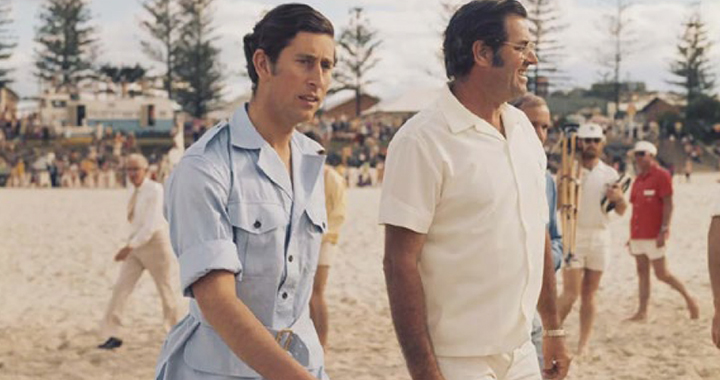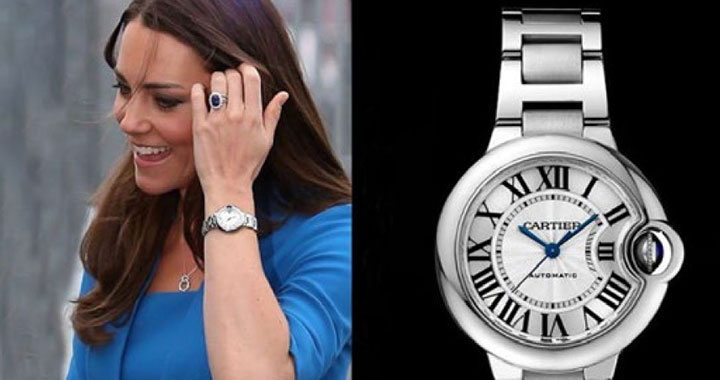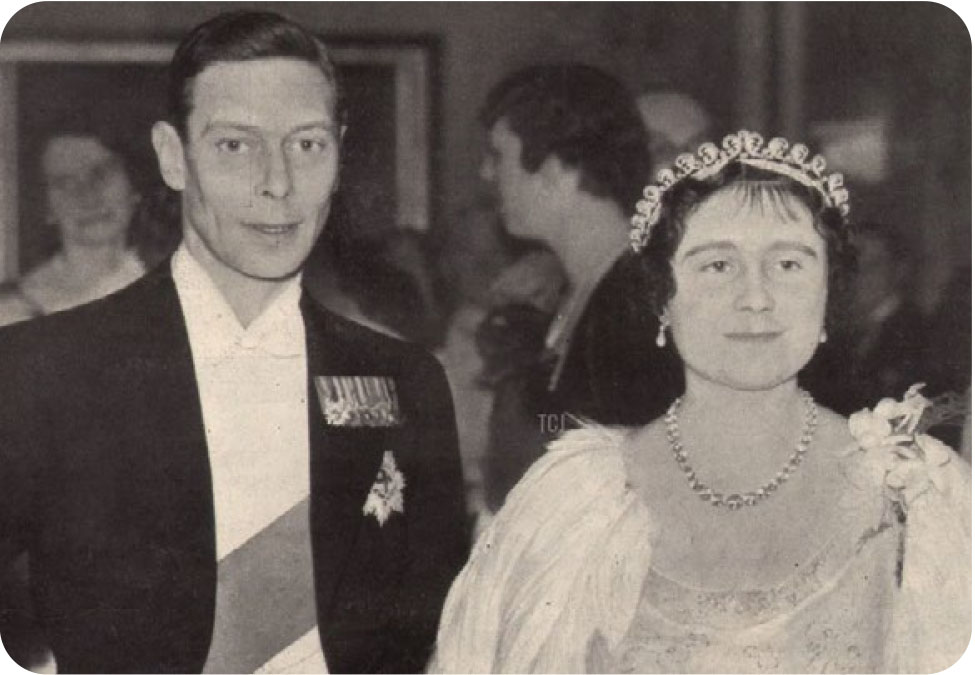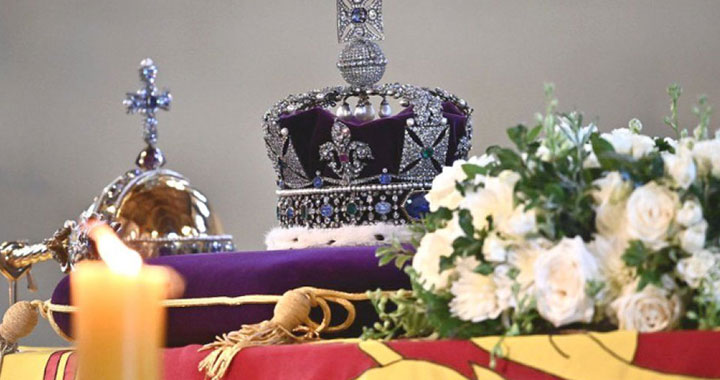On May 6th King Charles III will be crowned in Westminster Abbey. A tradition dating back nearly 1000 years since William the Conqueror who was crowned in 1066. Charles’s will be the 38th coronation in the Abbey, most, like Charles’s, having been conducted by the incumbent Archbishop of Canterbury.
We are expecting a simpler and more paired back coronation for King Charles, but this does not mean that it is going to be light on tradition and ceremony. This historic event will still be an occasion for spectacle and celebration.
It is a ceremony that has remained essentially the same for a thousand years and the Coronation Regalia are at the heart of proceedings, imbued as they are with cultural and spiritual significance. They represent the powers and responsibilities of the new King and the solemnity of the occasion.
The last time we saw some of the regalia of the coronation was on the late Queen’s coffin, which was adorned with the crown, orb and sceptre.

These three items will play an integral role at the heart of the coronation service, but they are not the only pieces that we will see on the day.
St Edward’s Crown is the crown historically used at the moment of coronation and worn by Her Majesty Queen Elizabeth at her coronation in 1953.

It was made for Charles II in 1661, as a replacement for the medieval crown which had been melted down in 1649 by Parliamentarians. Charles will wear this crown. The crown is 22 carat gold, so almost pure gold. It stands 30 cm tall and weighs an impressive 5lb. It contains tourmalines, white and yellow topaz, rubies, amethysts, sapphires, garnets, peridot, zircons, spinel and aquamarines. The three superstar gems in the crown are the Black Prince’s ruby, the Stuart sapphire and the Cullinan II diamond. No wonder Queen Elizabeth used to practise wearing it before the coronation, so its weight was not overwhelming on the day.
Camilla, the Queen Consort, will wear the Queen Mary’s Crown. This was removed from display at the Tower of London for modification work ahead of the coronation. It is the first time in recent history that an existing crown will be used for the coronation of a Consort. For previous coronations a new crown was commissioned. However, as a concession to the prevailing economic climate; sustainability and efficacy this crown, originally made by Garrards for the 1911 coronation, is being repurposed. Some minor changes and additions will be undertaken by the Crown Jeweller. These changes will pay particular tribute to the late Queen Elizabeth, as the Crown will be reset with the Cullinan III, IV and V diamonds. These diamonds were part of Queen Elizabeth II’s personal jewellery collection for many years and were often worn mounted in brooches.

At the heart of the ceremony itself are the sceptre, orb and the coronation anointing spoon. The Sovereign’s Sceptre and Cross symbolises the crown’s power and governance. It has been used at the coronation of every monarch since 1661. It was first used by King Henry VIII in 1509 for his own coronation. It is a golden rod, enamelled and set with multiple gemstones, the best known of which is the Cullinan I, or Star of Africa, a heart-shaped diamond weighing a colossal 530.2 carats.

In the photograph of Queen Elizabeth’s coronation you will see a second sceptre. This is the Sovereign’s sceptre with Dove. It is also known as the rod of Equity and Mercy and depicts an enamel dove wings outstretched alighting on the golden orb and cross. It represents the monarch’s spiritual role as head of the Church of England.
The most ancient piece of the coronation regalia is the coronation anointing spoon. The monarch is anointed with holy oil. The Chrism oil which will be used on May 6th has already been consecrated in Jerusalem. The oil itself comes from olives grown on the Mount of Olives and has been infused with sesame, rose, jasmine and other essential oils.
The spoon is silver gilt. Its existence was first recorded in 1349, but it may be even older. It is ornate with a central division and has been used to anoint monarchs for nearly seven hundred years. The central division may have been so that the archbishop might dip two fingers into the holy oil as he anoints the head, breast and hand of the new monarch.
It is traditional that the choir sings ‘Zadok the Priest’ during this sacred part of the ceremony; music originally composed by Handel for the coronation of King George II in 1727 and which has become an integral part of the proceedings.
The anointing is followed by dressing of the monarch in the spectacular robe of cloth of gold called the Supertunica and the long Imperial Mantle. The monarch is then presented with other items from the Coronation Regalia.
These include the gold spurs, the jewelled Sword of Offering and the Armills. The Armills are gold bracelets representing sincerity and wisdom. It is at this point that the monarch also receives the Sovereign’s Orb, as well as a ring and two sceptres.
The Orb is placed in the right hand of the monarch, during the investiture as the symbol of sovereignty. As a cross mounted on a globe, it represents the Christian world and the power of God. It is a reminder to the monarch that their authority is given by God. It is bisected with applied bands incorporating clusters of emeralds, rubies, sapphires and rose diamonds between bands of pearls. Having been handed to the King, it will be removed and placed on the altar before the moment of crowning.

The King will also be presented with the pair of golden spurs. These were first included amongst the regalia of the coronation in 1189 at the coronation of Richard the Lionheart. These represent his ‘knightly values and virtues’, such as protecting the poor, and defending the church. The current spurs are gold, made in 1661 for Charles1 and adapted in 1820 for George IV. In the past, the spurs were attached to the sovereign’s feet, but on May 6th they will be held at the ankle of the king.

The Sovereign’s ring will be placed on his fourth finger. The ring has the cross of St George at the centre formed from five rubies, overlaying an octagonal cut sapphire and bordered with fourteen old cushion cut diamonds. The ring was originally made by Royal Goldsmiths and Silversmiths Rundell, Bridge and Rundell for the coronation of William IV. It is said to be a symbol of ‘kingly dignity’.
The coronation sword, also known as The Jewelled Sword of Offering, will be presented by the archbishop, who first blesses the sword and then presents it with the direction that it should be used for the protection of the good and the punishment of evil. First used in 1821 by George IV, it has been used at all coronations since 1902. Like the Sovereign’s ring, the sword, made from blued steel, with a gold, jewel encrusted hilt and jewelled leather scabbard, was a commission from Rundell Bridge and Rundell.

The ceremony culminates with the placing of the St Edward’s Crown on the monarch’s head, the actual ‘coronation’.
The new King will change his crown for The Imperial State Crown as he leaves the Abbey. This is the crown that he will wear for future state occasions like the annual opening of Parliament. Although set in gold with 2,868 diamonds, 269 pearls, 17 sapphires, 11 emeralds and four rubies, it weighs a mere 2.3lb and is a more practical choice. It was worn by the Queen when she left Westminster Abbey in 1953. It was originally made for the coronation of her father, King George VI, in 1937.
Many of us grew up listening to older relatives tell tales of the Queen’s coronation. Televisions were purchased for the first time for the occasion, families huddled round radios to hear the ceremony live, and there is the enduring account of Queen Salote Tupou III who refused to be cowed by the rain and rode through London in an open topped carriage. No doubt King Charles’s coronation will be a different meld of old, new and unexpected acts of generosity and kindness. We can but wish for a day of joy and hope, amidst the tradition and ceremony.



















































